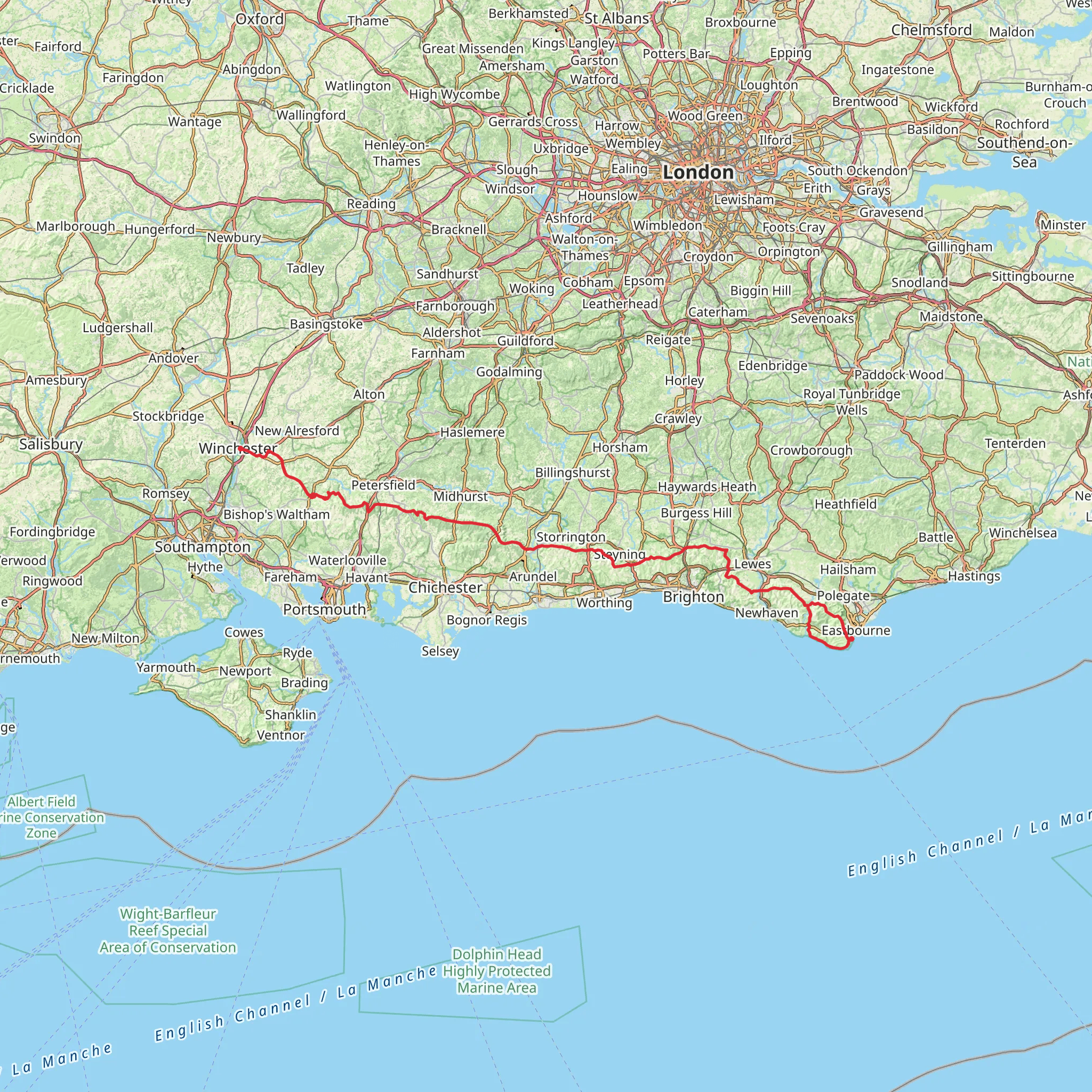Download
Preview
Add to list
More
161.6 km
~8 days
2699 m
Multi-Day
“Traverse the historic and scenic South Downs Way, a journey through England's rolling hills and rich heritage.”
Spanning approximately 100 miles (162 kilometers) across the rolling hills of southeastern England, the South Downs Way invites hikers into a landscape rich with history and natural beauty. With an elevation gain of around 8,530 feet (2,600 meters), this long-distance footpath offers a medium difficulty challenge, suitable for those with some hiking experience and a desire to immerse themselves in the English countryside.
Getting to the Trailhead
The trailhead, located near the village of Winchester in Hampshire, is accessible by public transport. Hikers can take a train to Winchester Railway Station and then a short bus or taxi ride to the trail's starting point. For those driving, parking is available in Winchester, with the trailhead being a short distance from the city center.
Navigating the Trail
The South Downs Way is well-marked with signposts and acorn symbols, indicative of a National Trail. For additional navigation support, hikers can use the HiiKER app, which provides detailed maps and GPS tracking to ensure you stay on the right path.
Historical Significance and Landmarks
As you embark on the trail, you'll be walking a path that has been trodden for thousands of years. The route is steeped in history, passing Iron Age hill forts, ancient burial mounds, and Roman roads. Notable historical landmarks include the ancient city of Winchester, once the capital of England, and the Long Man of Wilmington, a mysterious hill figure etched into the landscape.
Natural Beauty and Wildlife
The trail traverses the South Downs National Park, showcasing quintessential English scenery: chalk cliffs, expansive heathland, and woodlands. The route offers panoramic views of the English Channel and the Isle of Wight from atop the chalk ridges. Wildlife is abundant, with opportunities to spot rare birds, butterflies, and other native species.
Key Sections of the Trail
- Winchester to Exton (12 miles / 19 km): The trail begins gently, passing through the Itchen Valley and ascending to Old Winchester Hill, providing expansive views.
- Exton to South Harting (21 miles / 34 km): This section includes the ascent of Butser Hill, the highest point on the trail at 889 feet (271 meters), before descending into the quaint village of South Harting.
- South Harting to Amberley (18 miles / 29 km): Hikers will cross several river valleys and enjoy the sights of the historic market town of Amberley.
- Amberley to Pyecombe (20 miles / 32 km): This stretch features the iconic chalk pinnacles of Devil's Dyke and stunning vistas across the Weald.
- Pyecombe to Southease (13 miles / 21 km): The trail meanders through the Ditchling Beacon, an area of rich biodiversity and the highest point in East Sussex at 814 feet (248 meters).
- Southease to Eastbourne (22 miles / 35 km): The final leg includes the dramatic Seven Sisters chalk cliffs and ends at the seaside town of Eastbourne, where the trail concludes at the foot of the Beachy Head cliffs.
Preparation and Planning
Hikers should be prepared for the variable British weather by packing waterproof gear and layers. Water sources and refreshments are available in the villages along the route, but carrying sufficient water and snacks is recommended. Accommodations range from campgrounds to bed and breakfasts, allowing for a variety of overnight options.
The South Downs Way can be hiked in sections or as a whole, typically taking around 8 to 9 days to complete. It's a trail that offers not just a physical journey but a passage through time, connecting walkers with the landscape and history of this storied region.
What to expect?
Activity types
Comments and Reviews
User comments, reviews and discussions about the South Downs Way, England.
4.72
average rating out of 5
82 rating(s)

